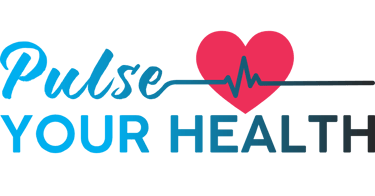Stay updated on what is trending in health. Discover tips and resources for a healthier, balanced life.
New COVID Variant NB.1.8.1: How Dangerous Is It? Symptoms, Transmission and Updates
Discover what you need to know about the new COVID variant NB.1.8.1 —symptoms, spread, vaccine access & public health recommendations. Stay informed, stay safe
NEWS
Dr. S. Ali
10/3/20253 min read


A new COVID-19 variant, NB.1.8.1 — informally dubbed "Nimbus" — is making headlines as it spreads globally and gains traction across the United States. Health experts and public health officials are closely monitoring the strain, which has been detected in California, New York, Virginia, and Washington, with early cases linked to international travellers. Here's what you need to know about this emerging variant.
What is NB.1.8.1?
NB.1.8.1 is a subvariant of Omicron, derived from the recombinant lineage XDV.1.5.1. Although it is not currently classified as a Variant of Concern, the World Health Organization (WHO) has listed it as a Variant Under Monitoring (VUM) due to its increasing spread. The variant appears to have a growth advantage, meaning it may spread more easily than earlier strains.
Where Has It Been Detected?
United States: First detected through airport screenings in late March and early April. Wastewater testing in California has also confirmed its presence.
China & Hong Kong: Associated with a significant summer surge in cases.
Australia & Europe: Additional detections suggest global transmission is underway.
Symptoms of NB.1.8.1
NB.1.8.1, a newly identified subvariant of Omicron. Informally dubbed "Nimbus", it appears to cause symptoms that are largely similar to earlier COVID-19 variants—especially other Omicron descendants. The good news? So far, there's no strong evidence that it causes more severe illness. However, what sets NB.1.8.1 apart is the sore throat that feels like a "razor blade" and its increased transmissibility. The increased transmissibility means it may spread more easily from person to person because it attaches more strongly to our cells.
Common symptoms include:
Sore throat – Often one of the first signs, and can feel scratchy or painful. The sore throat may be especially severe, with some describing it as feeling like "razor blades" when swallowing.
Cough – Usually dry but can sometimes be productive.
Fever – A mild to moderate fever is common in early stages.
Fatigue – Feeling unusually tired or drained even with rest.
Nasal congestion – A stuffy or runny nose, often mistaken for a cold.
Muscle aches – Achiness in the body or limbs, similar to flu-like symptoms.
Headache – Can range from mild discomfort to a throbbing sensation.
Nausea – In some cases, especially with loss of appetite or mild stomach upset.
Some people may experience just a few of these symptoms, while others might feel like they have a full-blown flu. Importantly, many cases—especially in vaccinated individuals—remain mild.
Even though this variant doesn’t seem to make people sicker, its high rate of spread means it can still lead to more cases overall. That could increase the burden on hospitals and raise the risk for people who are elderly or have underlying conditions.
Professional tip: If you’re feeling under the weather—even if you think it’s just a cold—consider testing, masking, and resting. Early detection helps prevent transmission, especially with these fast-spreading variants.
Public Health Response and Prevention
As questions about booster availability remain, health experts stress the importance of basic preventive measures:
Vaccination: Staying up-to-date with COVID-19 vaccinations to reduce the risk of severe illness.
Masking: Wearing masks in crowded or indoor settings, especially if you're at higher risk.
Hygiene: Practicing good hand hygiene and respiratory etiquette.
Testing: Getting tested if you experience symptoms or have been exposed to someone with COVID-19.
Stay home if you're unwell
In areas like Hong Kong, authorities are advising residents to mask up on public transport and in crowded places as cases climb.
Can Codid 19 vaccinated individuals get infected by the NB.1.8.1 variant?
Yes, vaccinated individuals can get infected with NB.1.8.1, but the risk of severe disease is much lower than for those who are unvaccinated. Staying up to date with booster doses, especially for older adults and those with chronic conditions, is still strongly recommended by health authorities worldwide.
Final Thoughts
NB.1.8.1 is a highly transmissible COVID-19 subvariant that has prompted new discussions around vaccine policy and public health preparedness. While it does not appear more dangerous than earlier variants, its rapid spread and timing ahead of respiratory virus season make it one to watch. Experts continue to advocate for accessible vaccination, especially for vulnerable populations, and recommend that individuals stay informed and proactive about their health
Related Articles:
1. Summer COVID-19 Update: Stratus Variant & Rising US Cases
2. COVID-19 Vaccines: What You Need to Know (And Why It Still Matters)
Sources:
World Health Organization (WHO) – COVID-19 Variants Dashboard
Track global COVID-19 variant trends, including NB.1.8.1:
https://data.who.int/dashboards/covid19/variants
Centers for Disease Control and Prevention (CDC) – Variant Surveillance
U.S. information on emerging variants and surveillance tools:
https://www.cdc.gov/coronavirus/2019-ncov/variants/variant-surveillance.html
CBS News – “COVID variant NB.1.8.1 hits U.S. What to know about symptoms, new booster vaccine restrictions”
By Sara Moniuszko, updated May 27, 2025
https://www.cbsnews.com/news/covid-variant-nb181-symptoms-boosters/
San Francisco Chronicle (via ABC7 News) – “New COVID variant NB.1.8.1 detected in California, scientists say”
By Liz Kreutz, May 2025
https://abc7news.com/new-covid-variant-nb181-california-stanford/14810799/
The San Francisco Standard – “NB.1.8.1 variant spreading in California amid booster restrictions”
https://sfstandard.com/health/nb181-covid-variant-california-2025/
Pulse Your Health
Empowering you to achieve your health goals.
Contact
© 2025. All rights reserved.
Disclaimer: The content on this website is for informational purposes only and is not medical advice. Always seek the advice of your physician or other suitably qualified healthcare professional for diagnosis, treatment and your health related needs.
